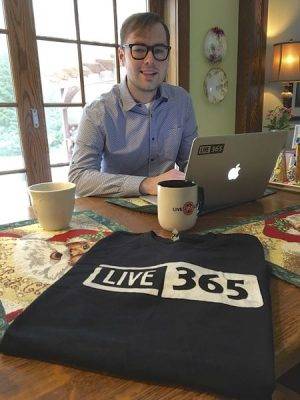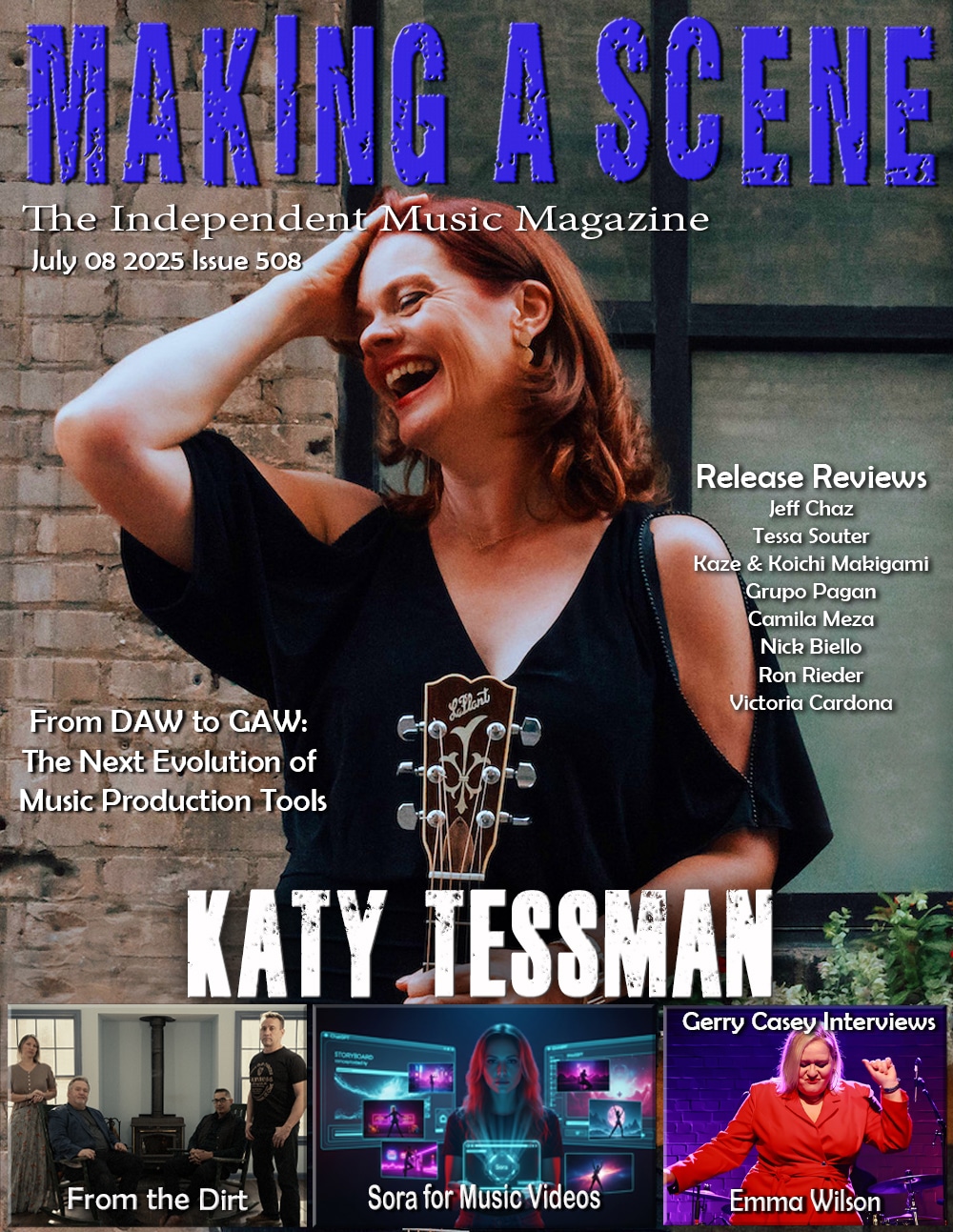LIVE 365 IS BACK!!

Live 365 Is Back
By Richard L’Hommedieu
In January of 2016 the copyright royalty board allowed the the small webcaster agreement to expire which resulted in an dramatic increase in royalty rates to those webcasters (See The State of Internet Radio). It is The Small Webcaster who creates a much needed diversity in a ever shrinking world of corporate control of media. One of those that fell, partly as a result of this change, was the web broadcasting service “Live 365”. One of the oldest (started in 1999) and most prominent in the market which came as a shock to everyone. When it went dark thousands of small webcasters no longer had an outlet for their stations.
Billboard Magazine puts the issue into this perspective:
Live365’s closure was another sign of an inexorable trend. December’s webcasting rule changes could have a similar effect — through different means — as the Telecommunications Act of 1996, which eliminated the cap on radio station ownership, previously 40 stations nationwide (the rules were reaffirmed a couple weeks ago). That resulted in American broadcast radio ending up, broadly speaking, in the hands of just a few companies, with iHeartMedia at the front with 850 stations. (iHeartMedia, it’s no coincidence, is also the second-largest digital radio broadcaster in the U.S., behind Pandora.) Much as smaller broadcasters were protected before 1996 because ownership rules fostered more ownership diversity, larger webcasters are now protected from smaller entrants.
“For small webcasters just starting out, it’s very difficult to monetize until you get scale,” David Oxenford, a partner at D.C. law firm Wilkinson Barker Knauer and someone who helped craft the 2002 Webcaster Settlement Act, tells Billboard.Otherwise, as is well understood, “advertisers won’t be very interested in you. In order to attract them, you’ve got to have large, large scale — and you’re paying for every listener before you’ve reached scale.”
RESURRECTION

In July of 2016 Jon Stephenson acquired “LIVE 365” at a bankruptcy auction for an undisclosed amount and in January the website quietly appeared back on the internet with hints of what may be on the way. In mid May they started to allow broadcasters to start signing up for their new service. What is interesting is Jon Stephenson owns and operates the content delivery network EmpireStreaming, which works with broadcasters helping them stream their content digitally as well as works as an advertising aggregate to help monetize those streams.
Stephenson tells Billboard “We work with a lot of small-to-medium sized broadcasters. If you’re a single station, or a really small station, we aggregate all of their ad inventories, so we can go directly to advertisers with a larger scale, and greater negotiating leverage.” Stephenson further explained to Billboard his plan for Live 365. “I definitely see that there’s an opportunity with bringing back a lot of smaller radio stations. There’s a huge opportunity with representing scale. And if we’re able to rebuild Live 365 in some shape or form, then we have that branding and we can actually go compete with iHeart or Pandora. We can actually build a significant scale.”
As with any internet streaming service LIVE 365 will cover all royalty obligations (ASCAP, BMI, SESAC, Sound Exchange) and is trying too price its service in a way that it is accessible to these small webcasters. The Live365 website claims that they will cover U.S. music licensing under all of its plans. Their base plan begins at $59 ($79 without ads) a month for 1,500 total listening hours (the number of listeners times the number of hours they listen ie: 10 listeners x 4 hours = 40 Listening Hours). That music licensing includes songwriting royalties (ASCAP, BMI, SESAC) and recording royalties (SoundExchange).
When you sign up for Live365, you can choose a package with ads or without ads. Compare the monthly cost of packages without ads to packages with ads:

This does reflect an increase from the old rates that the old Live 365 charged. It’s base program was $39 a month for a similar tier of service that covered music licensing fees, but with 500 fewer listening hours. The new Live365’s $99 a month plan actually gives you more than their $109 plan, giving you 500 more listening hours for $10 less.
What is new?
Stephenson said in a statement,
“Live365 has been one of the best-known names in internet radio since 1999. By restoring the platform, we’re giving small webcasters a home to build diverse, creative content while we handle the complex licensing, monetization, and distribution. Live365 has a renewed passion to give webcasters a voice in internet radio.”
As you read the statement above you will notice the word “Monetization”. This is where the expertise and marketing strength of Empirestreaming comes into play. LIVE 365 will have ad triggers which will allow you to determine where it will insert ads into your program. These ads will go to offset the cost of their service in the form of advertising credits. See (Advertising Revenue Sharing Program)
From the LIVE 365 Website:
In addition to packages with ads being cheaper to begin with, there is another benefit to signing up for a broadcast package that includes ads. You will be included in the Advertising Revenue Share Program, which can help further reduce the monthly cost of your broadcast package. According to the details of the Advertising Revenue Share program outlined in the Terms of Service, Live365 will share 50% of Net Advertising Receipts with you, the broadcasters. In other words, of whatever we gained from monthly ad revenue we give back 50% to our broadcasters, depending on the proportional amount of the impressions that are aired on our broadcasters’ stations.
How much can I earn?
Here is an example: if Live365 received $2,500 for delivery of 850,000 US audio impressions in the particular month, a Broadcaster whose stations delivered 100,000 of those impressions would be paid $147 for these US impressions which represents 50% of the corresponding US ad revenue delivered by this station.
What other things should I know about the Advertising Revenue Share Program?
Usually, you will get paid out in credits towards your Live365 bill. The credits will be made anywhere between 90-120 days following end of corresponding month. When you get paid-out for your portion of the Advertising Revenue Share Program, your account will be credited unless you send a request to receive direct payment from Live365 instead of account credit.
Only those Broadcasters whose Live365 accounts are current are eligible to receive payment from Live365. In other words, in order to receive your credits, you Live365 account payments must be up to date.
Your credits are also contingent on following the required minimum of 4 minutes of advertising per hour of programming with a maximum of two (2) minutes is allowed per ad break, with a separation of at least 15 minutes in-between each ad break. An ad break is defined as an event triggered in order to allow Live365 to insert digital audio ads on the stream. This must be upheld even if you are using automation software like Mixxx, BUTT, PlayIt Live etc. According to the Terms of Service, broadcasters are not allowed to insert any third party paid advertising in their station’s programming at any time.
Conclusion
No matter what you might think about internet radio and streaming, for now, it is the ONLY place left where we can find a diversity of music and programming that is not being dictated by a corporation. If the LIVE 365 achieves the goals it has laid out for itself, it will give a large shot in the arm for the small web broadcaster. Being able to offset the cost of their service with advertising revenue will help those broadcasters grow and could lay the groundwork of a new revolution for the independent artists!
Discover more from Making A Scene!
Subscribe to get the latest posts sent to your email.







